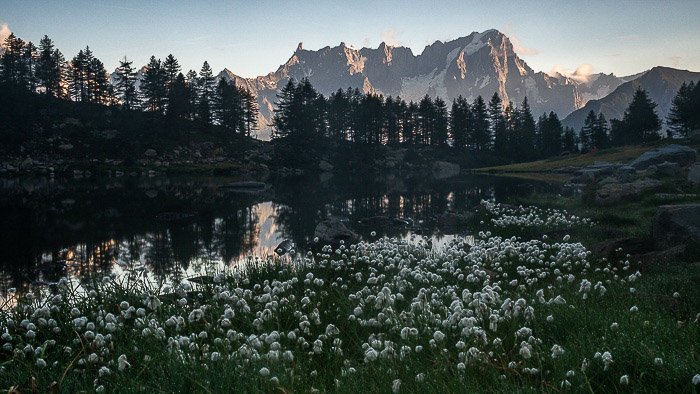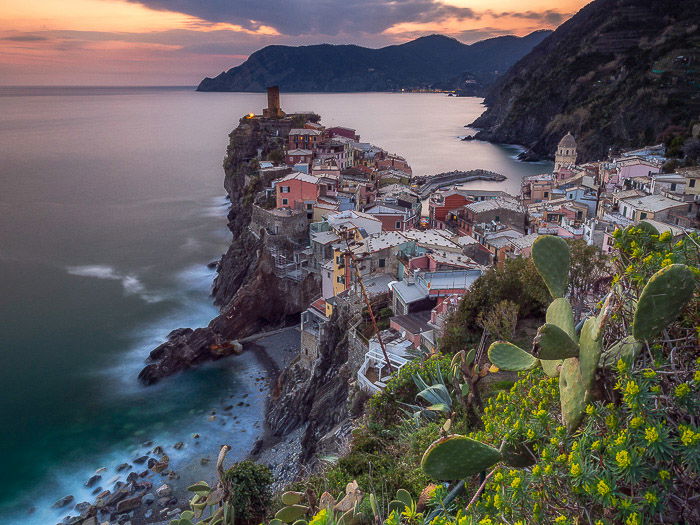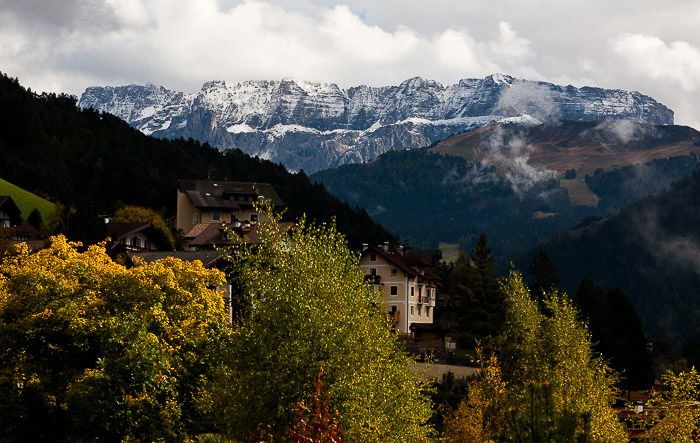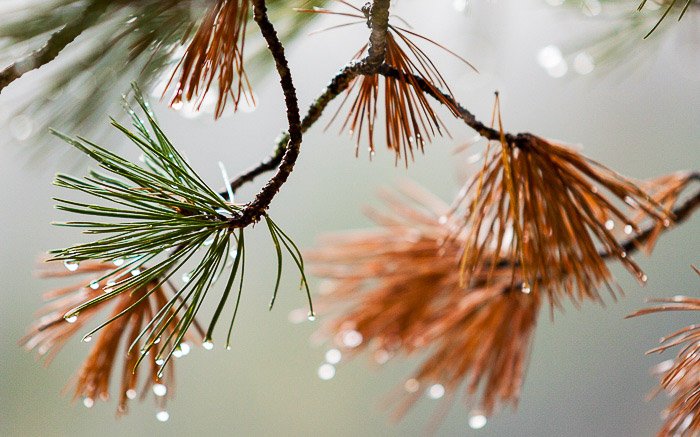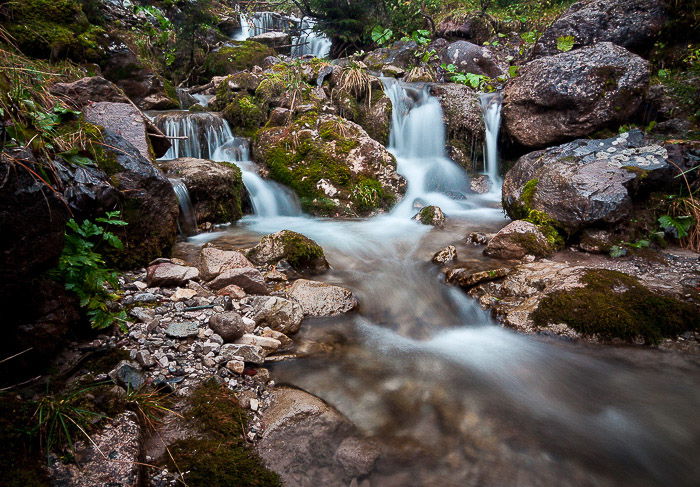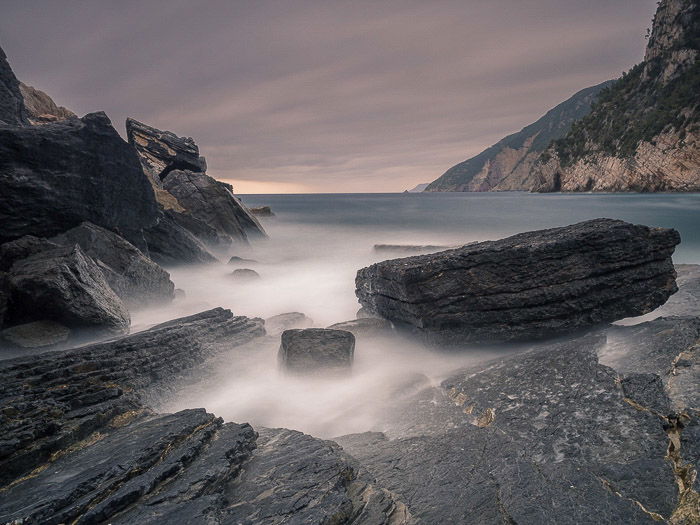Seasonal Landscape Photography: Spring Photography
Spring is synonymous with rebirth. Nature, flowers and plants, colors and streams – they all come alive. At higher altitudes the snow starts to melt. Rivers and waterfalls are once again full of water. It’s now that you should focus on waterfall photography. They’re swollen with water, which brings out their majestic beauty. This is one of the best moments to photograph them. The vegetation also grows green and lush. This gives your composition almost an enchanted effect, fairy tale. Not to mention the flowers that are everywhere. Walking in the mountains can offer fantastic observation points. Place beautiful spring flowers in the foreground. And high snow-capped mountains in the background. A simple but powerful juxtaposition of colors and sensations. Spring blooms are also a great subject. Especially for landscape photographers, but also for macro and flower photography aficionados. I can think of at least five or six places off the top of my head where a blooming flower would improve the composition. And more where it might ruin the picture. As the vegetation comes alive, so do the animals. They wake up from the long months of hibernation. It’s an ideal moment to go to photo hunting. The animals in the forest are looking for food. And thanks to the warmer temperatures, they’ll be everywhere. The days will get more and more hours of light. The weather conditions change often. The same location can have different atmospheres. All in a matters of few minutes. It is not difficult to find skies full of clouds heavy with rain. And at the same time sunsets full of color and effect.
Summer Photography
I find summer to be the most difficult time to produce photos I like. Don’t get me wrong. Summer is a wonderful season. The days are long, and the sunrises and sunsets full of colors and excitement. And summer storms can bring dramatic weather photography. But dawn starts very early in the morning, with the blue hour even before 5am. And the sun sets late in the evening. For a landscape photographer, this means getting up very early in the morning. And going to sleep very late. And if you leave in a place like Italy, there’s a good chance the skies will stay clear for days. Not a single cloud. This gives me a great feeling of boredom, and it’s made worse by a sunset or sunrise with no clouds. The only interest point is the sun and the way it transforms the sky. It’s more difficult to create interesting skies in the summer. This is a fact. But there are ways around it. Read weather sites, use mobile weather tracking apps or a weather radar. Then you can get an idea of the evolution of the weather. You can use these to give your compositions unique atmospheres. And to avoid the disappointment of heading out in the hot weather, only to come home with no photos. It’s not all bad though. Summer photography can be a lot of fun. I do a lot of photography research in the winter. I spend a lot of time studying the best locations, how to take advantage of weather conditions, and so on. In the summer, I can take advantage of this. And I’m more likely to organize photography trips. This way, I can visit the locations you have dreamed of during the winter. I took some of my favourite photos ever during summer travels throughout Europe. Summer is also the best time for astrophotography, especially Milky Way photography. This is from June to the beginning of September. In the summer, in the northern hemisphere, the Milky Way appears in its greatest splendour. Its core remains visible for a long time well above the horizon line. And its inclination is almost vertical. Once summer is over, the nucleus is invisible again and below the horizon line.
Fall Photography
Fall is one of the best times for photography. Together with spring, is a photographer’s favourite season. And I’m not only talking about landscape photographers. For all photographers. Fall comes with warm and vivid colors that make all kinds of photography stand out. Landscape, portraits, macro, wedding – every photography niche can enjoy fall. There’s fewer hours of harsh midday sunlight. It’s easier to take pictures with soft, warm golden light. You also won’t get home from that sunset shoot at 2am only to have to leave for the sunrise one. The colors change a lot during fall. They go from almost all greens to beautiful warm reds, oranges and yellows. The falling leaves themselves become another subject you can photograph. It’s popular, and everyone seems to photograph autumn leaves, but it’s always impressive. Places like Canada and Japan are famous for their autumn foliage. Their woods become a landscape or portrait photographer’s. No wonder these places attract hoards of photographers in the fall. Weather conditions also change during the autumn months. Blue and clear skies give way to grey days and heavy clouds. This means that you have a natural soft box to attenuate harsh light. If you don’t yet know the magic of cloudy day photography, check out this article here. During the fall, the rain lasts longer as well. Waterfalls are full of water after the summer’s drought. So go out there and photograph them. The colors of the vegetation will help you create a more powerful composition. Waterfalls are usually found in woods and gorges. There are plenty of leaves around that you can use as a focus point for the viewer.
Winter Photography
Winter is one of the most complicated seasons for photography. Especially for those shooting landscape. The days are very short, even here on the shores of the Mediterranean sea. This increases your chances for great sunrise and sunset photography. But there’s a lot less light than during the summer. This means you have to plan your shooting times and locations. The time margin to change position or frame is smaller than in the summer. You won’t have as much time for mistakes. The weather conditions are also less prone to sudden changes. This will help you predict your next photos. But it can lead to long days of waiting for the right light and weather conditions. Waterfalls freeze over in the winter, or they have very little water. Torrents and alpine lakes will also be at least partially frozen. And heavy snowfalls in the mountains make traveling and moving around more difficult. Both by car and on foot. I find snow one of the most suggestive elements you can photograph. But at the same time, snow photography can be tricky. It’s easy to get the exposure wrong, and find yourself with grey, underexposed snow photos. But snow-capped mountains have a special charm. And so do woods blanketed in white. Make you sure you keep your gear safe in extreme weather conditions though.
Conclusion
There are no perfect seasons for photography. Every season has its own peculiarities and each one is awesome. From a photography point of view, of course. This article has provided you with some interesting ideas for each season. From the strengths of each seasons to their pitfalls. But even if a season seems more challenging, don’t leave your camera at home. Take it with you and go out there. Have fun, make mistakes and learn from them. Each season can offer you amazing compositions and breathtaking perspectives.


